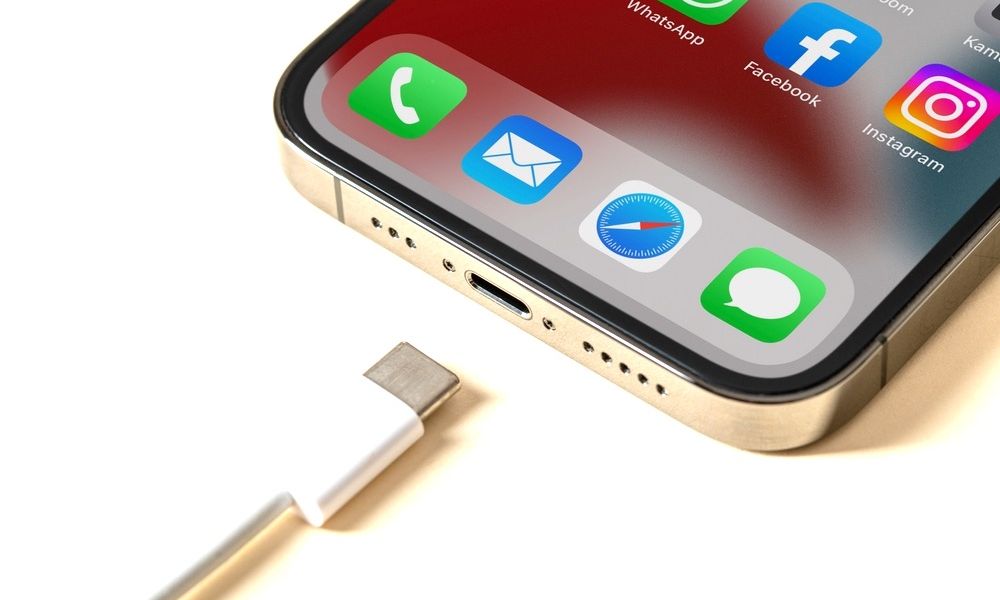These iPhones Are Leaving Europe as USB-C Rules Come Into Effect
 Credit: Shutterstock
Credit: Shutterstock
Toggle Dark Mode
When the European Commission mandated USB-C for the iPhone a little over two years ago, it provided a grace period for Apple to continue selling its existing Lightning-equipped devices. Now that 2024 is coming to a close, so is Apple’s authorization to sell iPhones that don’t include a USB-C connector for charging.
According to iGeneration (via 9to5Mac), Apple will pull the iPhone 14, iPhone 14 Plus, and iPhone SE (2022) off the market in the EU at the end of 2024.
The European Union’s exception noted that devices “placed on the market” before the cutoff date could continue to be sold. While there was some confusion over that language, it seemed to refer only to physical inventory — units manufactured in 2024 that were still in the pipeline — not whole model lines. It seems that’s been proven right as Apple prepares to stop selling its last Lightning-equipped iPhones on the continent.
Of course, that’s not a particularly long list of devices since Apple switched to USB-C with the iPhone 15 lineup a little over a year ago. Any iPhones released since 2023 are good to go. However, Apple has also stuck with its tradition of selling its two-year-old iPhone models, and then, of course, there’s the little iPhone SE.
The iPhone 14 models were the last mainstream phones to use Lightning. While the Pro models were discontinued over a year ago when their iPhone 15 successors arrived, the iPhone 14 and iPhone 14 Plus continue to be sold on Apple’s website as more affordable models, as does the 2022 iPhone SE.
This means there are three Lightning iPhones that will soon run afoul of the EU’s USB-C-only rules. Two years ago, mysterious device identifiers in Apple’s beta software pointed to two unknown iPhones equipped with an A15 chip. That got me speculating that Apple may have been considering re-releasing the iPhone 14 and iPhone 14 Plus in USB-C versions to allow it to keep selling them after the EU rules came into full force.
Of course, we know now that this didn’t happen. However, we never saw any new iPhones representing these identifiers, suggesting that Apple had either scrapped its plans or that these were internal prototypes it never intended to release.
We also failed to see the next-generation iPhone SE that many hoped would materialize by now. That’s likely coming next spring, but it won’t arrive in time to beat the cutoff, leaving Europeans without that model as an option for at least a few months.
This cuts off the entire low-end of the iPhone family for European customers. As of January 1, 2025, the lowest-priced iPhone available for purchase in the EU will be the iPhone 15. That starts at $699 in the US and ranges from 849 to 879 Euros in the EU, depending on your country.
That’s a hefty jump over the €529–549 iPhone SE, although it’s not a good time to buy Apple’s budget iPhone anyway, with a new one right around the corner.
The “iPhone SE 4” will likely land in April and March next year and will almost certainly be sold in the EU, as it will have switched to USB-C. It’s also expected to pack in the latest A18 chip and feature a design so similar to the iPhone 14 that most folks won’t be mourning the disappearance of the older iPhones. By next fall, Apple will likely have discontinued the iPhone 14 and iPhone 14 Plus worldwide, with the iPhone 15 and iPhone 15 Plus moving into that lowest-priced tier. At that point, not only will the harmony of the iPhone lineup in Europe have been restored, but it will also spell the final death of Lightning among Apple’s devices, marking the first time every iPhone on the market is sporting a USB-C port.







